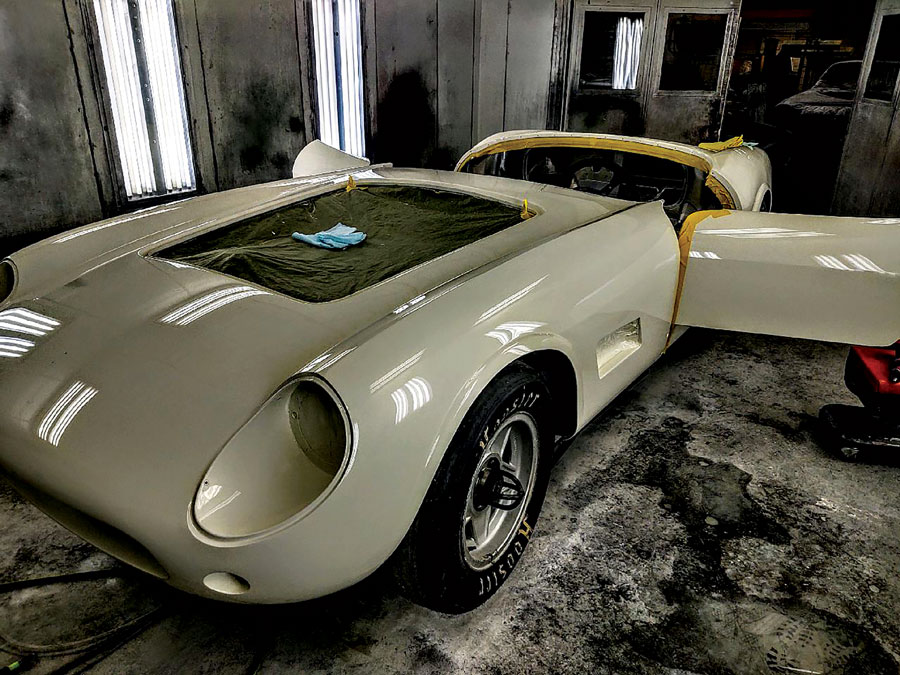
In my just-released book The Archaeological Automobile, I write that all restoration is fictional. What I mean is that despite the most careful effort and the most meticulous research, the resultant job will be no more than an approximation of the automobile’s lost reality.
“But surely not!” I hear hundreds of SCMers cry out. “My restoration of my 1970 Boss 302 Mustang is perfect down to every last detail.”
No doubt, it is very good, but did you duplicate the exact effect of mass-produced assembly-line manufacture? The chalk and crayon marks? The industrial paint application, with its exact pattern of drier and wetter paint areas? Or the proper and exact misalignment of the bright anodized window trim?
Well, probably not. This statement, “all restorations are fictional,” is not designed to indicate some failing or shortcoming in any restorer’s work. I have performed countless restorations over almost 50 years — some better than others — trending ever upwards with respect to verisimilitude to the prototype from which it is taken. But however you look at them, they are all simulacra. And a simulacrum, in the words of French social theorist Jean Baudrillard, “is an exact replica of something that never existed.” (Emphasis mine.)
Present tense
We implicitly understand that restoration is a process performed by people in the present. They intervene with the deteriorated automobile with the intention of giving it its voice in the present. Once we pick up tools for a restoration, though we may do so with blood oaths and the intent of altering the artifact from the past as little as humanly possible, the restoration process always transforms, even destroys, the past, if only by severing the car’s most important relationship, its connection to that selfsame and irrecoverable past.
The disparity between “what was” when compared to the deteriorated state of “what has been left to us” by time and wear and other restorers compels us to intervene with our prized car in the present, to re-present the past as we perceive it and as we interpret it, not how it was. When we remediate the damage and losses to the artifact caused by time and use, we inevitably find ourselves not so much saving the past as refashioning it anew, because the past that we know is not the past as it was, but the past from our own minds of today.
For material relics like the apocryphal Boss 302, choices must be made between restoring to present authenticity of material or authenticity of form; of original manufacturer’s intent or subsequent development and adaptation; of pristine newness or evocative patina, wear and decay. Historical truth is something flickering, ungraspable, mutable.
Remembering a past that never was
Do we really know how the thing actually was when it was built back in the day: the overspray, the misalignments, the individuality caused by the assembly-line workers? Even then, we are dealing with a simple archetype, the standard, characteristic, normative example. The archetype is our automobile as it was born, devoid of age, use and character.
Consider the following metaphor: When we are born, we all look the same and aside from minor differences, we all resemble the cartoon character Mr. Magoo. But 40 years later, after life experiences, we are individually unique, showing the effects of our behavior and life experiences in our bodies and faces. So it is with industrialized, mass-produced products like our Boss 302.
If we choose to avoid the anonymizing restoration that aspires to the production of an automotive archetype which, by definition, incorporates none of the distinguishing features that tell us about the car’s making, use, modifications, accidents, repair and plain wear and tear, we have a fictional but characterless evocation, a replica of something that never existed.
A good restoration
What, then, should be the goal of a restoration? What constitutes a good one compared to a mediocre or even counterproductive one? Well, let’s examine the dichotomy between archetype, something embodying the standard characteristics of the thing, and portrait, an evocation of someone or something that attempts to capture the essence of that someone or something.
First, understand that either way, archetype or portrait, fictional re-creation will be at work. On one hand we have the thing as a standardized-but-anonymous automobile, and on the other, we have the thing as an individual, unique, automobile from a class of one.
In the end, I contend that what makes people — or things such as cars — interesting and engaging is their individuality. With respect to automobiles, that individuality comes from the car’s life experiences as a transportation device.
Tony Piff captures the issue in his draft preface to his book, Old Parked Cars: “As these cars racked up the miles, odometers rolling over, they silently witnessed the daily lives of their drivers and passengers — the joys, the stresses, the drama, the tedious minutiae; spilled milkshakes, stray shopping carts, sandy bathing suits, sex, break-ups, divorces, wedding proposals… with the built-up accretion of an infinite number of secret memories… the market value of these cars approached zero.”
The point is that the evidence of human stories engraved in the material fabric of the car makes it an emotional and powerful historical artifact. Great restorers know this and attempt, to the extent that they can, to make their restorations a fiction reflective of the automobile’s duration, use and experiences on this earth. Such a strategy tries to honor the automobile’s relationship to time and use.
The slight scars of ancient damage, the lack of symmetry in hand-built components, even the overspray and construction misalignments are worth considering. Your choice is android-like archetype or unique portrait. Both are fictional, but one is worth the effort. ♦